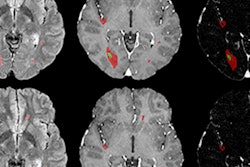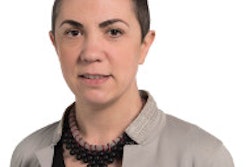
Radiologists must be fully prepared for the next big technological leap forward that will be brought on by the implementation of artificial intelligence (AI), according to Prof. Valentin Sinitsyn, president of the Russian Society of Radiology (RSR).
Sinitsyn is chair of radiology at the faculty of fundamental medicine and head of the radiology department at University Hospital, Lomonosov Moscow State University, Moscow. In this interview with the British Institute of Radiology (BIR), he looks at what the future might have in store.
 The lack of imaging referral guidelines remains a problem in Russia, Prof. Valentin Sinitsyn said.
The lack of imaging referral guidelines remains a problem in Russia, Prof. Valentin Sinitsyn said.The RSR was founded in 1916. Today, it has more than 3,200 active members and consists of 36 regional radiological societies. Its annual congress takes place in the second week of November, around the same time as the International Day of Radiology.
BIR: What do you think will be the single most positive development in the world of imaging in the next 10 years?
Sinitsyn: Like many of my colleagues, I believe that the most positive development in diagnostic imaging will be the use of information technology and artificial intelligence. I am not afraid that IT and AI will replace human radiologists. They are new tools that will give a tremendous boost to medical imaging. They will save radiologists from many routine and time-consuming tasks, and will help us to use our intellectual potential at its fullest capacity.
IT and AI will improve all the major directions of radiologist's activities such as handling patient workflow, the interpretation of images, control over the treatment of patients, and the communication with medical colleagues and patients. Digitization of radiology and use of the internet have already deeply influenced all fields of a radiologist's activities, and the era of AI is just a logical continuation of this process. I believe that all diagnostic examinations will be preprocessed with different kinds of IT and AI tools before a radiologist will get there for final analysis and reporting. Merging myriad imaging networks all over the world -- both small and large -- will give us unprecedented opportunities for handling and processing imaging data.
We probably do not yet understand the full scale of these global changes that are going to completely change the landscape of our profession in the coming years. I entered radiology in the era of analog, film-based radiology when nobody had heard of PCs and the internet, and I witnessed a real revolution when medical imaging was digitized. Now we are ready for the next big leap in imaging, and I hope to see the outstanding results of such a metamorphosis pretty soon.
What is the biggest obstacle to progress in imaging around the world and in your country, in particular?
There are many objective and subjective obstacles to the further progress of imaging over the globe and in my country. But probably the most important one is a mismatch between the demand and supply; between the opportunities of modern imaging and its practical implementation.
First of all, the funding of radiology and radiologists and the organization of imaging services in any country does not fit with the best scenarios. We know that modern radiology has a lot of fantastic opportunities. Their implementation may lead to better diagnoses and treatment of millions of patients resulting in better outcomes and prognoses. For example, in many cases, replacement of x-ray (e.g., chest and emergency cases) with low-dose high-speed CT would lead to a more timely and accurate diagnosis. There is a lot of scientific data proving it. But from organizational points of view, no country so far can afford to do such a transition. The same applies to MRI. Demand for this type of diagnostic imaging is very high, and in many cases it could be a first-row examination, replacing ultrasound and x-ray.
In Russia, there is also a particular problem related to the creation and implementation of national imaging referral guidelines. Nevertheless, I hope that these problems will disappear or become less pressing in the coming years.
What do imaging professionals need to do to best prepare themselves for success?
To preserve our profession and make it even more important and visible for the benefit of our patients, radiologists must obtain more and more both radiological and clinical knowledge. We should foresee all global changes in contemporary medicine and be ready for them to stay at the forefront of progress.
Editor's note: This interview first appeared in the "Global Future of Imaging," a 24-page report published in November 2019 by the BIR World Partner Network. You can download the report from the BIR website.



















